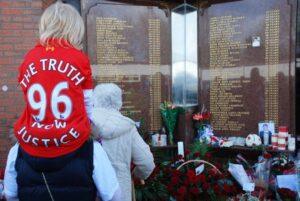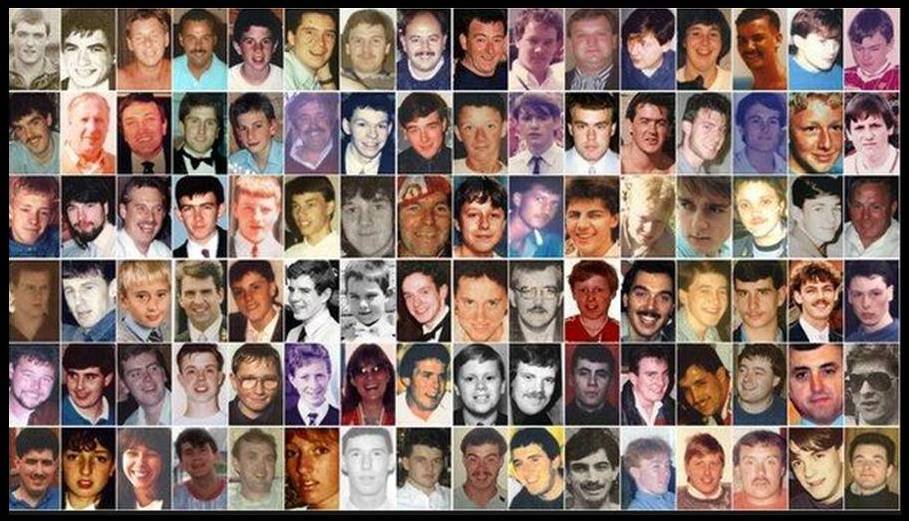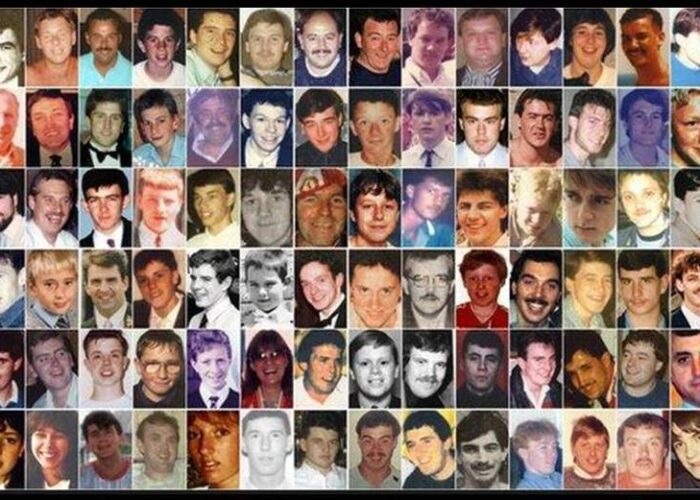
Jury members at the Hillsborough inquests have finally retired to consider their conclusions after more than two years of hearings.
The members of the jury are now tasked with deciding whether the 96 victims of the disaster were unlawfully killed, or otherwise.
There are 13 other considerations listed on the jury questionnaire, some of which refer to the Hillsborough stadium itself and match hosts Sheffield Wednesday and its staff.
Key inclusions are the questions regarding whether or not the police’s actions caused or contributed to loss of life in the disaster, and also the behaviour of supporters attending the Liverpool v Nottingham Forest FA Cup semi-final on April 15th 1989.
On the final day of his summing up, Coroner Lord Justice Goldring told the jury: “We are conscious that you have devoted a very large part of your lives to these inquests. We have, of course, reached a very important stage of the inquests.
- Basic facts of the disaster.
- Police planning for the game.
- Policing of the match and the situation at the turnstiles.
- Policing of the match and the crush on the terrace.
- The opening of the Leppings Lane gates.
- Were those who died unlawfully killed?
- Behaviour of the supporters.
- Defects in Hillsborough stadium.
- Licensing and oversight of the stadium.
- Conduct of Sheffield Wednesday FC before the game.
- Conduct of Sheffield Wednesday FC on the day of the match.
- Conduct of Eastwood and Partners (SWFC engineers).
- Emergency response and the role of South Yorkshire Police.
- Emergency response and the role of South Yorkshire Metropolitan Ambulance Service.
“It is of the highest importance that all of you work together in the interests of justice. It requires you to be able to discuss the evidence together in a civilised manner. It requires you to work together as a team. It requires you to make your decisions together. It requires you to put to one side any personal issues which can sometimes arise.”
The inquests are the longest in British legal history, beginning in March 2014 following the High Court’s decision to quash the ‘accidental death’ verdict of the original hearings in 1991. The fresh inquiry in Warrington has overseen 267 days of evidence regarding the tragedy, with testimonies concluding earlier this year.
This focused on more than 500 witnesses, 4,000 pages of documents and hours of video footage. The 1989 match commander, David Duckenfield, and South Yorkshire Police are among the individuals and organisations listed as interested parties, along with the victims.
Since returning on January 25th from the conclusion of evidence, Lord Justice Goldring has been summarising the facts for the jury, who must now reach their decisions.
The unlawful killing consideration will largely depend on whether the jury believes Mr Duckenfield, who was in charge of the game at Hillsborough, is responsible for the deaths through gross negligence, or not.
To answer ‘yes’ to that question, jury members have been told they must agree with four points: that Mr Duckenfield owed a duty of care to the fans; that he breached that duty care; that his breach was a significant cause of the deaths; and finally that the breach was so serious it was a criminal act.
Lord Justice Goldring, speaking in January, explained that the jury would have to consider the crucial order given by Mr Duckenfield at 2.52pm to open an exit gate and allow a large number of supporters into the Leppings Lane end, where the fatal crush occurred. The decision to not close off a tunnel leading to the central pens is also crucial.
It is not known when the seven women and three men* on the jury are expected to return with their questionnaire decisions, including matters relating to the recorded time of death.
Next week’s 27th annual Hillsborough memorial service at Anfield on April 15th will be the last, with the families saying it is now time to move on after their long fight for justice.
* Update: one of the jurors was discharged on medical grounds on 7/4/16 and the deliberations continue with six women and three men.


